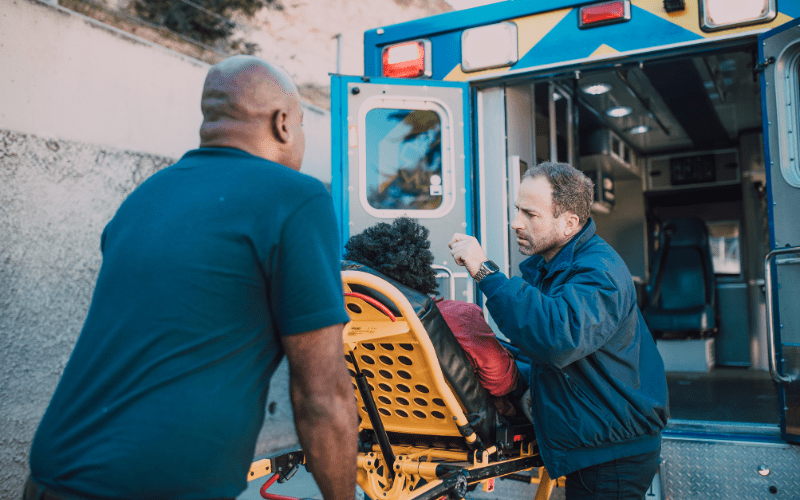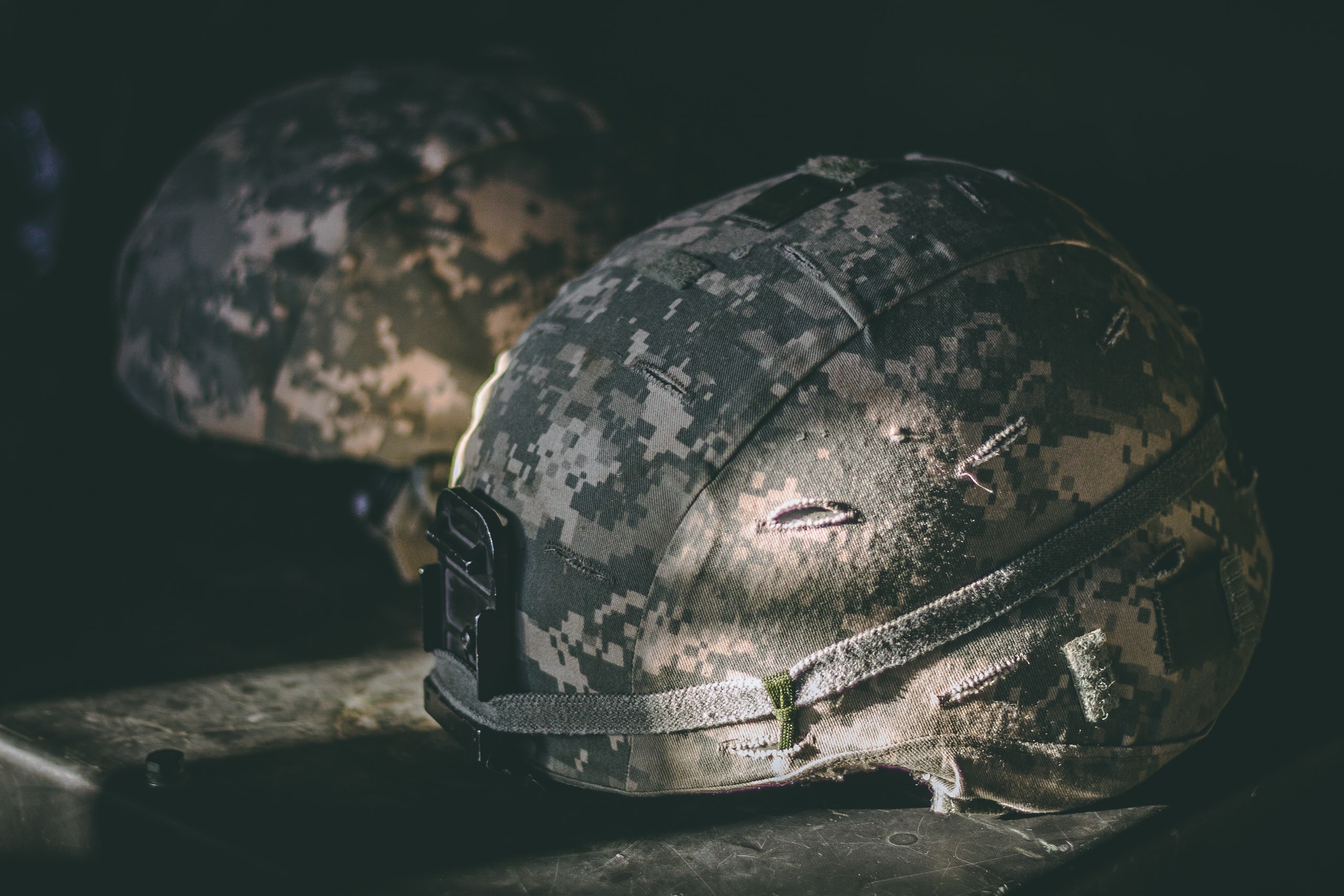EMDR Therapy and First Responders
Guest Blog Post by Kate Pieper, LMFT
Tell us a little bit about you, your experience becoming an EMDR therapist, and your experience with first responders.
 I have been an EMDR therapist since my training from Francine Shapiro in 2007. At that time, I experienced a profound shift in my personal growth. The shift was so profound from the benefits of my own personal EMDR therapy, that I continued to use it, with great success, regularly with my clients.
I have been an EMDR therapist since my training from Francine Shapiro in 2007. At that time, I experienced a profound shift in my personal growth. The shift was so profound from the benefits of my own personal EMDR therapy, that I continued to use it, with great success, regularly with my clients.
I became niched in working with first responders through being asked to do wellness training for federal and local fire and law enforcement agencies. I also received specific Critical Incident Stress Management training through the International Critical Incident Stress Foundation, which went perfectly with my EMDR work with first responders. Doing Critical Incident Stress Debriefings regularly with first responders has allowed me to have knowledge about their calls that transfers nicely to the therapy room.
What is your favorite part of being an EMDR therapist with first responders?
My favorite part of working with first responders is being effective and relieving the symptoms they are experiencing from doing the work they are passionate about and have dedicated their lives to. Often, first responders are overwhelmed and shocked that they need help with post-traumatic stress INJURY or Compassion Fatigue. Letting them know there are answers to their symptoms is a privilege.
How can EMDR therapy help first responders? What successes have you seen?
I have had the privilege of providing EMDR therapy to first responders with long careers in firefighting, law enforcement, and paramedics. Through using EMDR and teaching resiliency skills, I have been able to help first responders go from being on stress disability to getting back effectively to work and finishing out their careers strong.
I have heard back from my clients many times that the calls and people who once haunted them in dreams and flashbacks are no longer there. One officer came back the next week after EMDR expressing shock that he could no longer bring to mind the image of the young girl he had been with while she passed away due to a car crash. These types of reports happen frequently in my practice. I am often asked to “just do your voodoo” to me and help me move on with my life.”
Are there any myths you’d like to bust about using EMDR therapy with these clients?
I am not certain what the myths are about working with first responders. I believe they are often labeled as “hard” and sometimes even misunderstood as “narcissistic,” rather than realizing the officers and/or firefighters or paramedics are not as emotionally attached to their jobs and lives as other people may expect them to be. They must have a certain level of emotional detachment to be successful in their careers. They are often called upon to show up during the common person’s worst day.
Any specific complexities or difficulties that first responders deal with that other populations may not? How does this affect therapy?
To be effective, therapists who want to work with first responders must become culturally competent in the first responder culture. Even the timing of the sessions needs to be scheduled around the client’s shift work to complement what they are experiencing in their bodies. The first responder will experience what is often referred to as an emotional hypervigilance experience while on duty. This experience while on duty causes them to crash afterward. During the crash, the client is often unable to feel and/or think as effectively as they will within 18 to 24 hours afterward. I make certain my clients’ EMDR sessions are scheduled to complement their shifts’ impact on their bodies and minds.
What multicultural considerations might EMDR therapists need to keep in mind regarding EMDR therapy with first responders?
As with any profession, multicultural issues must be held with respect and understanding of how the first responder is experiencing their profession. According to 2020 statistics, 60% of law enforcement officers are white, 18 percent are Hispanic, and 13 percent are Black. Someone identifying as a minority often experiences racism both from their culture and from the other officers in the agency. For example, during the protests of 2020, it was common to have a black law enforcement officer report the difficult experience of having their fellow officers express frustration toward the minority community while the black community was calling the black officers “Traitors,” throwing items at them and baiting the black law enforcement officers as to why they had chosen their career.
The latest statistics regarding firefighters show similar demographics: 70 percent are white, 15 percent are Hispanic, and 8 percent are Black.
Likewise, the LGBT community makes up 7% of law enforcement officers, while 5 percent of firefighters identify as gay. This is especially important to remember, as the first responder community is known for crude jokes and humor that may be shocking to the average professional.
What is your favorite free resource that you would suggest to other EMDR therapists when working with first responders?
I would encourage anyone interested in working with first responders to acquaint themselves with the following:
Books:
- “Emotional Survival of Law Enforcement Officers” – Kevin Gilmartin
- “Counseling Cops” – Fay, Kirschman, and Kamena
- “Hold The Line” – Cyndi Doyle
- “I Love An Officer” – Ellen Kirschman
- “I Love A Firefighter” – Ellen Kirschman
- EMDR With First Responders – Marilyn Luber
Podcasts:
What would you like people outside the EMDR community to know about EMDR therapy with first responders?
I would love for therapists who are not trained in EMDR and want to see first responders to understand how effective EMDR is with first responders. The therapist who meets with first responders would be more effective with their clients by either getting trained in EMDR or finding a wonderful EMDR therapist to refer their clients to. First responders are often motivated to get the help they want and/or need. However, this population deserves the utmost professional care available.
Anything else you’d like to add?
Like any population or any treatment, the professional therapist must know what population and issues they want to work with and are effective in serving. The first responder community needs therapists who are professional, trained, and can hear the worst days of the public this population has shown up for. There is no shame in saying, “I’m not for everyone,” and giving a great referral to a therapist who has made this population their niche.
Kate Pieper, LMFT has been in professional practice for ove 30 years and currently only sees first responders and their families. She is the former Coordinator for the Northern California Trauma Response Network, is a part of the Sacramento EMDR Regional Network Leadership, and volunteers as an EMDR tehrapist for the West Coast Post Trauma Retreat for first responders. She provides Critical Incident Stres Debriefing at incidents in Northern California, most recently the Camp Fire, CHP incidents and CalFire incidents. She is an adjunct professor for a local graduate school, teaching “Crisis Trauma, and Community Mental Health.” Kate is an EMDRIA Approved Consultant who provides consultation and training for other therapists to use EMDR with their clients. Kate has provided departmental resiliency training to Cal Fire, CHP, Bakersfield Police Department, San Jose Police Department and the California District Attorney’s Association, as well as other agencies.
Resources
Peer-Reviewed Articles
Alshahrani, K. M., Johnson, J., Prudenzi, A., & O’Connor, D. B. (2022). The effectiveness of psychological interventions for reducing PTSD and psychological distress in first responders: A systematic review and meta-analysis. PLOS ONE, 17(8): e0272732. Open Access: https://doi.org/10.1371/journal.pone.0272732
Bahji, A., Di Nota, P. M., Groll, D., Carleton, R. N., & Anderson, G. S. (2022). Psychological interventions for post-traumatic stress injuries among public safety personnel: A systematic review and meta-analysis. BMC Systematic Review, 11, 255. Open access: https://doi.org/10.1186/s13643-022-02112-1
Behnammoghadam, M., Kheramine, S., Zoladl, M., Zahra Cooper, R., & Shahini, S. (2019). Effect of eye movement desensitization and reprocessing (EMDR) on severity of stress in emergency medical technicians. Psychology Research and Behavior Management, 12, 289-296. Retrieved from: https://doi.org/10.2147/PRBM.S190428
Biggs, C., Tehrani, N., & Billings, J. (2021). Brief trauma therapy for occupational trauma-related PTSD/CPTSD in UK police. Occupational Medicine, 71(4-5), 180-188. Open access: https://doi.org/10.1093/occmed/kqab075
Farrell, D., Moran, J., Zat, Z., Miller, P. W., Knibbs, L., Papanikolopoulos, P., Prattos, T., McGowna, I., McLaughlin, D., Barron, I., Matthes, C., & Kiernan, M. D. (2023). Group early intervention eye movement desensitization and reprocessing therapy as a video-conference psychotherapy with frontline/emergency workers in response to the COVID-19 pandemic in the treatment of post-traumatic stress disorder and moral injury – An RCT study. Frontiers in Psychology, 14. Open access: https://doi.org/10.3389/fpsyg.2023.1129912
Gelbach, R. A. (2008). Trauma, research, and EMDR: A disaster responder’s wish list. Journal of EMDR Practice and Research, 2(2), 146-155. Open access: https://doi.org/10.1891/1933-3196.2.2.146
Haugen, P. T., Evces, M., & Weiss, D. S. (2012). Treating posttraumatic stress disorder in first responders: A systematic review. Clinical Psychology Review, 32(5), 370-380. https://doi.org/10.1016/j.cpr.2012.04.001
Ironson, G., Hylton, E., Gonzalez, B., Small, B., Freund, B., Gerstein, M., Thurston, F., & Bira, L. (2020). Effectiveness of three brief treatments for recent traumatic events in a low-SES community setting. Psychological Trauma: Theory Research Practice Policy. https://doi.org/10.1037/tra0000594
Jarero, I., Schnaider, S., Givaudan, M. (2019). Randomized controlled trial: Provision of EMDR protocol for recent critical incidents and ongoing traumatic stress to first responders. Journal of EMDR Practice and Research, 13(2), 100-110. http://dx.doi.org/10.1891/1933-3196.13.2.100
Kitchiner, N. J. (2004). Psychological treatment of three urban fire fighters with post-traumatic stress disorder using eye movement desensitization reprocessing (EMDR) therapy. Complementary Therapies in Nursing and Midwifery, 10(3), 186-193. https://doi.org/10.1016/j.ctnm.2004.01.004
Kitchiner, N. J., & Aylard, P. (2002). Psychological treatment of post-traumatic stress disorder: A single case study of a UK police officer. Mental Health Practice, 5(6), 34-38. doi: 10.7748/mhp.5.6.34.s21
Lansing, K., Amen, D. G., Hanks, C., & Rudy L. (2005). High-resolution brain SPECT imaging and Eye Movement Desensitization and Reprocessing in police officers with PTSD. The Journal of Neuropsychiatry and Clinical Neurosciences, 17(4), 526-532. Open Access: https://doi.org/10.1176/jnp.17.4.526
McNally, V. J., & Solomon, R. M. (1999). The FBI’s critical incident stress management program. FBI Law Enforcement Bulletin, 68(2), 20-26. http://www.ncjrs.gov/App/publications/abstract.aspx?ID=176790
Morris, H., Hatzikiriakidis, K., Savaglio, M., Dwyer, J., Lewis, C., Miller, R., & Skouteris, H. (2022). Eye movement desensitization and reprocessing for the treatment and early intervention of trauma among first responders: A systematic review. Journal of Traumatic Stress, Early View. https://doi.org/10.1002/jts.22792
Nascimento, J. C. P., Santos, K. V. G. D., Dantas, J. K. D. S., Dantas, D. V., & Dantas, R. A. N. (2021). Non-pharmacological therapies for the treatment of post-traumatic stress disorder among emergency responders: A scoping review. Revista da Escola de Enfermagem da USP, 18(55) e03724. Open access: https://doi.org/10.1590/s1980-220×2020011603724
Rost, C., Hofmann, A., & Wheeler, K. (2009). EMDR treatment of workplace trauma. Journal of EMDR Practice and Research, 3(2), 80-90. Open access: http://dx.doi.org/10.1891/1933-3196.3.2.80
Sharif, S., Mohammad, Z., Falahan, S. N., & Ghesmati. (2020). One-year follow-up of eye movement desensitization and reprocessing on stress intensity of emergency medical technicians. Journal of Critical Reviews, 7(13), 2672-2676. doi:10.31838/jcr.07.13.406. Open access: http://www.jcreview.com/index.php?mno=127044
Tehrani, N. (2019). Evaluation of a trauma therapy programme within emergency service organizations. Occupational Medicine, 69(8-9), 559-565. https://doi.org/10.1093/occmed/kqz111
ter Heide, F. J. J., de Goede, M., van Dam, S., & Ekkers, S. (2022). Development of an online supportive treatment module for moral injury in military veterans and police officers. Frontiers in Psychiatry, 13. Open access: https://doi.org/10.3389/fpsyt.2022.890858
Wilson, S. A., Tinker, R. H., Becker, L. A., & Logan, C. R. (2001). Stress management with law enforcement personnel: A controlled outcome study of EMDR versus a traditional stress management program. International Journal of Stress Management, 8(3), 179-200. https://doi.org/10.1023/A:1011366408693
Other Articles/Blogs
Allen, M. (2021). Personal experiences of EMDR therapy within secure services. [Thesis, Cardiff Metropolitan University]. https://doi.org/10.25401/cardiffmet.17091875.v1
Adler-Tapia, R. L. (2018). Providing mental health services to first responders and public safety professionals. Go With That, 23(4), 10-15. https://www.emdria.org/publications-resources/go-with-that-magazine/
Alter-Reid, K., Crouch, M., & Rost, L. (2018). Responding to trauma with first responders in Fairfield, Connecticut. Go With That, 23(3), 12-13. https://www.emdria.org/publications-resources/go-with-that-magazine/
Berard, Y. (2021, April 26). As COVID winds down, concerns about mental health grow. EMS World. https://www.emsworld.com/news/1225779/covid-winds-down-concerns-about-mental-health-grow
Brothers, G. (2018). Utilizing EMDR treatment for law enforcement personnel in the Rio Grande Valley of Texas. Go With That, 23(4), 30-32. https://www.emdria.org/publications-resources/go-with-that-magazine/
Canham, M. (2018, May 22). A formerly suicidal Salt Lake City firefighter got help – and now he’s urging other first responders to consider therapy. The Salt Lake Tribune. Retrieved from: https://www.sltrib.com/news/2018/05/18/once-suicidal-a-salt-lake-city-firefighters-got-help-now-hes-urging-other-first-responders-to-consider-therapy/
EMDR for First Responders. (2014, Feb). EMDR for First Responders [blog]. Retrieved from: http://emdrfr.blogspot.com/
Gilman, S. G. (2018). 9-1-1 Telecommunicators/dispatchers: The first-first responders. Go With That, 23(4), 24-26. https://www.emdria.org/publications-resources/go-with-that-magazine/
Gilman, S. G. (2018). Firefighters and EMDR. Go With That, 23(4), 16-19. https://www.emdria.org/publications-resources/go-with-that-magazine/
Gilman, S. (2018). First responder cumulative traumatic-stress exposure. Go With That, 23(3), 24-26. https://www.emdria.org/wp-content/uploads/2020/09/GWT.2018.23.4.Firefighters_and_EMDR_Gilman.pdf
Heinrich, C. (2020, June 12). A better way to curb police brutality. The Hill. https://thehill.com/opinion/criminal-justice/502441-a-better-way-to-curb-police-brutality
Hoffman, J. (2020). ‘I can’t turn my brain off’: PTSD and burnout threaten medical workers. The New York Times. Retrieved from: https://www.nytimes.com/2020/05/16/health/coronavirus-ptsd-medical-workers.html?auth=link-dismiss-google1tap
Kolmetz, M. (2023). EMDR: ‘I signed up as a skeptic. I left as a convert.’ Police1. https://www.police1.com/wellness-week/articles/emdr-i-signed-up-as-a-skeptic-i-left-as-a-convert-34HUAOY8yB4IcaBy/
Logan, C. (2018). The use of EMDR within a police population. Go With That, 23(4), 21-23. https://www.emdria.org/publications-resources/go-with-that-magazine/
Murano, J. for Ozarksfirst.com. (2018, Feb 13). Crime in focus: Helping officers out. https://www.ozarksfirst.com/local-news/crime-in-focus-helping-officers-out/
Petty, W. H. (2018). Helping the helpers: Crime victim services and trauma. Go With That, 23(4), 28-29. https://www.emdria.org/publications-resources/go-with-that-magazine/
Phillips, L. (2020). Putting first responders’ mental health on the front lines: Counselors can take steps to lower some of the barriers that prevent those who respond in emergency situations from prioritizing their mental health. Counseling Today, 63(1), 30-35. https://ct.counseling.org/2020/07/putting-first-responders-mental-health-on-the-front-lines/
Provetto, S. (2018). EMDR advocacy award winner: Salvatore “Sonny” Provetto. Go With That, 23(4), 33-34. https://www.emdria.org/publications-resources/go-with-that-magazine/
PTSD UK. (n.d.). Case study: EMDR treatment – Rob. https://www.ptsduk.org/case-study-emdr-treatment-rob/
Reynolds, J. & Simmons, B. (2018). Protecting those who protect others [Interview]. Go With That 23(4), 35-36.
Sliss, T. (2023, Feb 23). Helping those who help others: Dachinger’s Responder Resilience Podcast tackles tough issues. The Scarsdale Inquirer. https://www.scarsdalenews.com/top_stories/helping-those-who-help-others-dachinger-s-responder-resilience-podcast-tackles-tough-issues/article_3d2aa230-b3b4-11ed-a41c-e7974ef5ce92.html
Stockmar, S. (2020, Sept). Glendale Fire fights mental health issues head on. Daily Independent. https://www.yourvalley.net/stories/glendale-fire-fights-mental-health-issues-head-on,187995
Trauma Recovery EMDR Humanitarian Assistance Programs. Career federal law enforcement officer discusses his life-changing encounter with EMDR. https://www.emdrhap.org/content/news/law-enforcement-officer-encounter-with-emdr/
Vernon, B. (2016, Jan 15). How one paramedic is recovering from PTSD. Journal of Emergency Medical Services, 2(41). https://www.jems.com/2016/01/15/how-one-paramedic-is-recovering-from-ptsd/
Vogel, R. & Wickham, A. (2019, Jul 24). Pinnacle: Building a resilient team. EMS World. https://www.emsworld.com/article/1223018/pinnacle-building-resilient-team
Zachariah, H. (2020, March 31). Eye movement therapy helps first responders deal with harsh realities of their jobs. The Columbia Dispatch. https://www.dispatch.com/news/20200331/eye-movement-therapy-helps-first-responders-deal-with-harsh-realities-of-their-jobs
Books/Chapters
Adler-Tapia, R. L. (2013). Early mental health intervention for first responders/protective service workers including firefighters and emergency medical services professionals. In M. Luber (Ed.), Implementing EMDR early mental health interventions for man-made and natural disasters: Models, scripted protocols and summary sheets. (pp. 343-382). New York: Springer Publications.
Gilman, S., & Marshall J. (2015). Reaching the unseen first responder: Treating 911 trauma in emergency telecommunicators. In M. Luber (Ed.), EMDR scripted protocols: Anxiety, depression, and stress-related issues (pp. 185-216). New York: Springer Publications.
Gilman S., & Kerwood, R. (2018). Does Your Console Need a Reboot? EMDR Therapy for Healing Traumatic Stress & Self Care. In J. Marshall (Ed.), The resilient 9-1-1 professional, a comprehensive guide to surviving & thriving in the 9-1-1 center (pp.112-127). South of Heaven Press.
Lansing, K. (2012). The rite of return: Coming back from duty-induced PTSD. Monterey Bay, CA: High Ground Press.
Luber, M. (Ed.). (2015). EMDR therapy with first responders: Models, scripted protocols, and summary scheet6s for mental health interventions. New York, NY: Springer Publishing.
Videos/Podcasts
Canham, M. (2018, May 22). A formerly suicidal Salt Lake City firefighter got help – and now he’s urging other first responders to consider therapy. The Salt Lake Tribune. https://www.sltrib.com/news/2018/05/18/once-suicidal-a-salt-lake-city-firefighters-got-help-now-hes-urging-other-first-responders-to-consider-therapy/
Scaling Up EMDR. (2020, Mar 20). Dr. Jarero’s self care video for frontline workers. YouTube. https://www.youtube.com/watch?v=BGl5QOFHtbE&t=16s
Schwester, D. (Host). 2020, September 10). Episode 62: Surviving PTSD with Chris Divver. In The Overrun Podcast. Next Rung. https://theoverrunpodcast.com/2020/09/10/episode-62-surviving-ptsd-with-chris-divver/
Snohomish County Fire District 7. (2019, Mar 11). PTSD Outreach v2. https://vimeo.com/322906184/f86440b6c1
Back to Focal Point Blog Homepage
Additional Resources
If you are a therapist interested in the EMDR training:
- Learn more about EMDR at the EMDRIA Library
- Learn more about EMDR Training
- Search for an EMDR Training Provider
- Check out our EMDR Training FAQ
If you are EMDR trained:
- Check out EMDRIA’s Let’s Talk EMDR Podcast
- Check out the EMDRIA blog, Focal Point
- Learn more about EMDRIA membership
- Search for Continuing Education opportunities
If you are an EMDRIA Member:
- Learn more about EMDR Consultation
- Find clinical practice articles in EMDRIA’s Go With That Magazine
- Search for articles in Journal of EMDR Practice and Research in the EMDRIA Library
Date
July 17, 2023
Contributor(s)
Kate Pieper
Client Population
First Responders/Healthcare Workers





